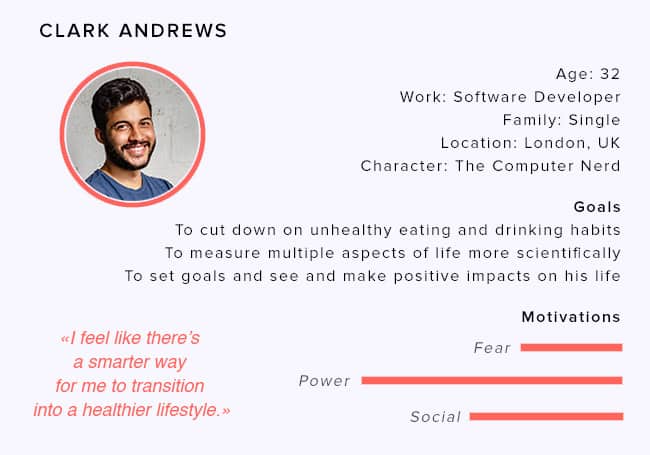So your marketing campaign failed. You spent weeks creating a detailed drip campaign about your company product, and you filled it with quality content and graphics. You even made sure to send it out at the idea email open times, and included easy to see CTA’s. However, after observing the analytics, you see that you...
So your marketing campaign failed. You spent weeks creating a detailed drip campaign about your company product, and you filled it with quality content and graphics.
You even made sure to send it out at the idea email open times, and included easy to see CTA’s.
However, after observing the analytics, you see that you received very few clicks and zero purchases. What went wrong?
Chances are, if a marketing campaign is filled with quality, unique content and still fails, there is a disconnect between who you think you’re marketing to, and who your actual potential customers are.
Check out this paragraph from The Kapost Blog about misunderstanding your customer:
“SiriusDecisions highlights that the biggest challenge to creating content is a lack of buyer understanding, and only 23% of B2B marketers have adopted a persona-centric focus for their content.” In addition, they found “irrelevance is the number one reason why content is not read by buyers, with 29% of respondents mentioning this as their top challenge.”
Oftentimes we think we know our customers, only to do some research and discover we have been misidentifying them the entire time.
So if a marketing campaign falls flat and you’re not sure why, maybe the problem isn’t your content.
Maybe you need to simply cater to a new audience.
The Best Way to Know is to Ask
If you want to figure out what kind of people might buy your product, the best thing to do is to ask those who already do.
Inquiring with your current customers about their lifestyle and buying preference is one of the most accurate ways to pinpoint your buyer persona(s), or the caricature of the typical customer of your product or service.
You can send out a “buyer persona survey” to your current customers that will get you the information you need to comprise 2-3 accurate buyer personas.
Some things you could include in this survey would be:
- Describe your job position (role, title, who you report to, who reports to you, how many people do you manage)

- What is the most stressful part of your workday? What is the most stressful part of your non-workday?
- Describe your level of education.

- What is your greatest challenge in your role at work?
- Describe your family situation.
- What tools do you rely on to do your job well?
When you get your responses back, sort your answers into categories in order to find patterns amongst your customers. Is there a group in their 40’s who earn around the same income and share similar interests? If so, summarize this “type”of customer in the form of a buyer persona.

This is usually a made up person that embodies the unique aspects of this “customer type” and can be used as a constant reference for your marketing team.
Make sure to give the persona a name and a picture in order to humanize it for you team.
Reassess Your Voice and Image
Once you have information about who your customers are and what your buyer personas look like, you can revisit your campaign and decide how you could better cater your marketing materials to your buyer personas.
Could you use a younger, fresher tone to appeal to your young professional buyer persona? Do you need to use less complex language to appeal to a buyer persona who works outside of your industry?
Once you really know who you are talking to, it becomes possible to speak their language and hone in on their needs.
Some things to consider when you are reassessing your campaign are:
- How does my buyer persona talk in a professional setting?
- How does my persona behave in a private setting (amongst friends)?
- Would my buyer persona respond better to informative, formal language, or casual, motional language?
- Does my buyer persona need visual cues to help understand our product/offer?
- Am I saying things that will interest my buyer persona?
By asking yourself these questions, you will make sure to create a campaign that is both relevant to your buyer persona’s life, and easy to understand and act on.
(Never forget a clear call to action in ANY marketing campaign so that your buyer persona knows what to do if they want to take the next step to buy!)
Focus on One Persona at a Time
Chances are you’re going to end up with multiple buyer personas once you finally receive and organize all of your survey responses.
However, it is very difficult to target a marketing campaign to more than one persona at a time.
It’s a good idea to organize your email lists of potential customers by persona and focus your campaigns on marketing to one persona at a time.

This might mean making three separate campaigns for a special deal instead of one, but it’s worth it.
Special campaigns for each buyer persona will allow you to send out highly targeted material that will cater to each persona and hopefully bring in more activity and lead to more sales.
There’s no doubt that having a failed marketing campaign can be discouraging.
However, if you take the time to assess where your campaign missed the mark and use it as a learning experience, a failed campaign can actually be a blessing in disguise.
Too many companies waste valuable time and energy marketing to people that they have never bothered to get to know.
With customer knowledge surveys and buyer personas, you don’t have to be one of them.








